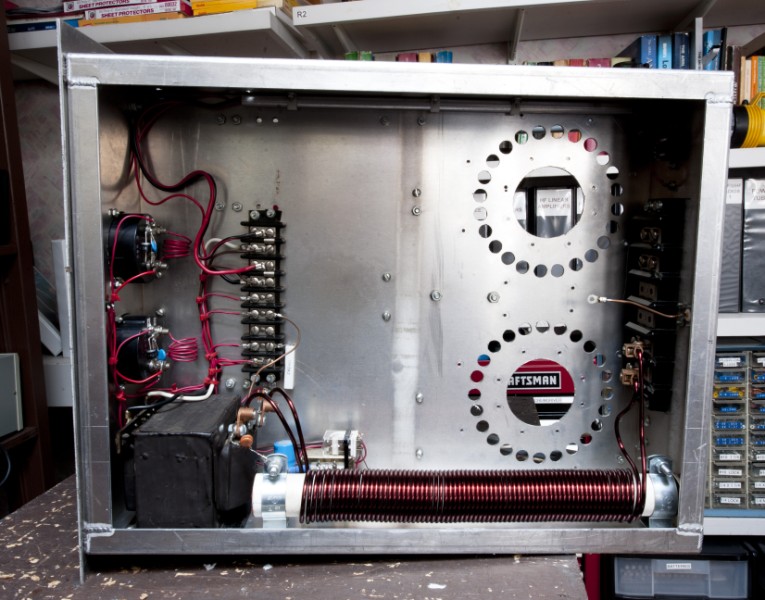
To operate the 813 at these output power levels, a sufficient volume of air moving over the tube’s glass envelope is required to dissipate the increased heat. Its intermodulation and harmonic distortion products are well below 40 dB down from its maximum power output, and its tendency toward parasitic oscillations is so low that a parasitic plate choke is unnecessary. With approximately 50w input, this amplifier produces 600w PEP output nominally, and around 500w PEP output at 29 mHz. The maximum output power of a single 813 would normally be around 300w PEP below 21 mHz. With the input tap position on L2 set properly, a near-perfect 50 ohm input impedance will be realized on all bands.Īside from its broad-band input tuning advantage, Pat’s unique input circuit stands apart in two other significant ways: it eliminates virtually all input mismatch distortion, and it increases the efficiency and stability of the 813 dramatically. For this reason it is necessary that C3 have off-center rotor plates for ease of tuning the higher frequencies. The LC circuit is shunted by a 2.5K ohm resistor to reduce its Q, and tunes from 7 mHz to 30 mHz, thus eliminating the need for an input band-switch. The coaxial input coil is resonated in parallel by a 1000 pf variable capacitor (C3), which is mounted above ground and tuned with an insulated shaft.

The filament voltage is then applied to the “cold” end of the coil, as well as its interior wire, as shown in the schematic drawing below. The coil is made of 3/16″ copper tubing which is connected directly to one of the tube’s filament terminals, and an insulated #12 wire passing through the interior of the coil’s tubing is connected to the other.

To best describe this unique circuit the 813’s directly heated cathode (filament) becomes an integral part of the resonant cathode tuning circuit by the use of a coaxial coil (L2). In most respects it is a typical grounded grid linear amplifier, with the exception of a rather unique tuned cathode input circuit that was developed by Pat over 10 years ago. It is only 11″ wide, 4″ high, and 9″ deep.

This compact little amplifier is the brain-child of Pat Murdoch, ZL1AXB, in Auckland, New Zealand. A low cost 600 watt ultra-linear amplifier for 40, 20, 17, 15, 12, and 10m


 0 kommentar(er)
0 kommentar(er)
